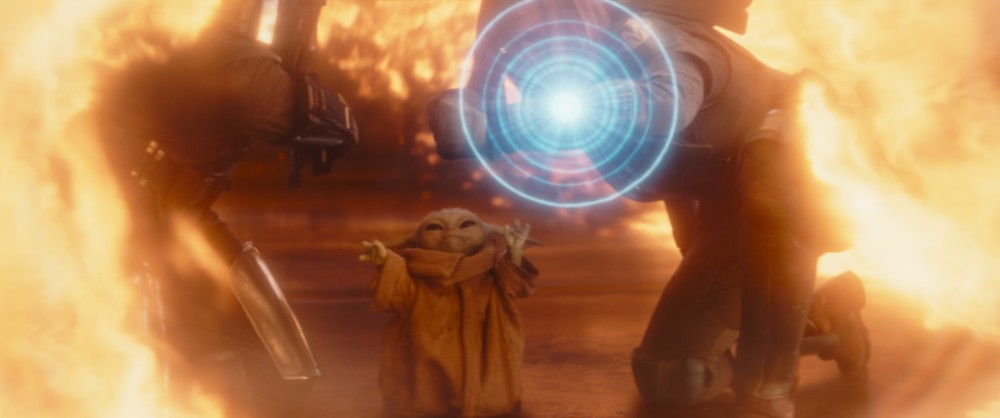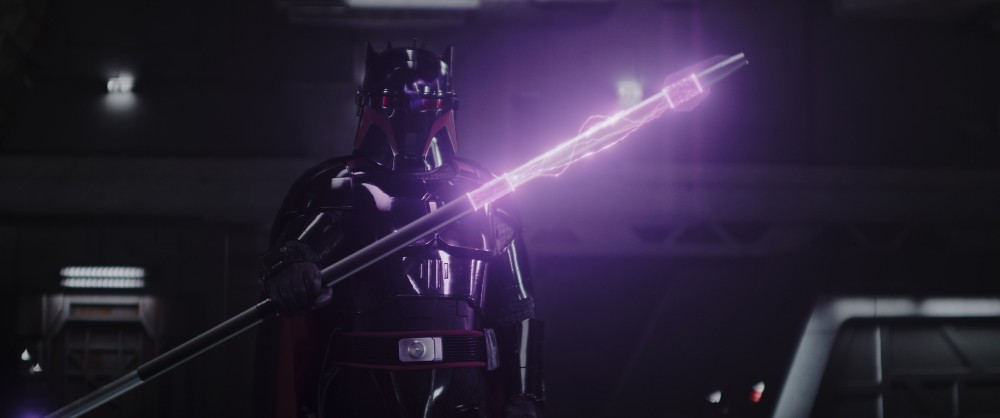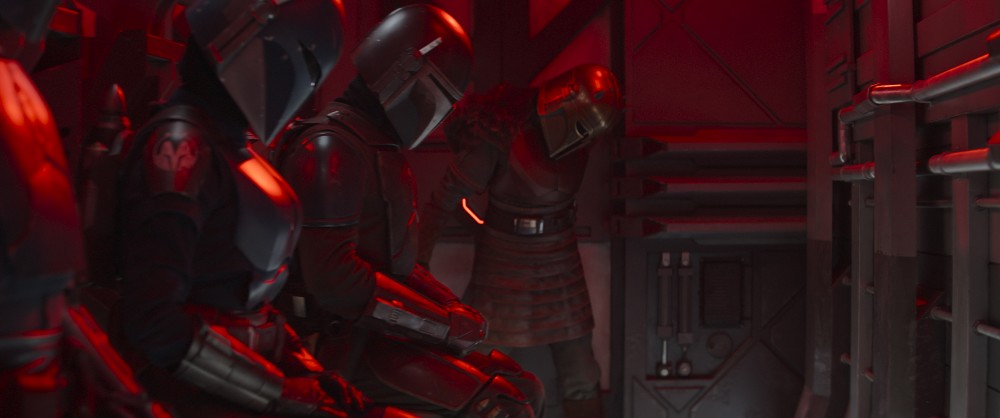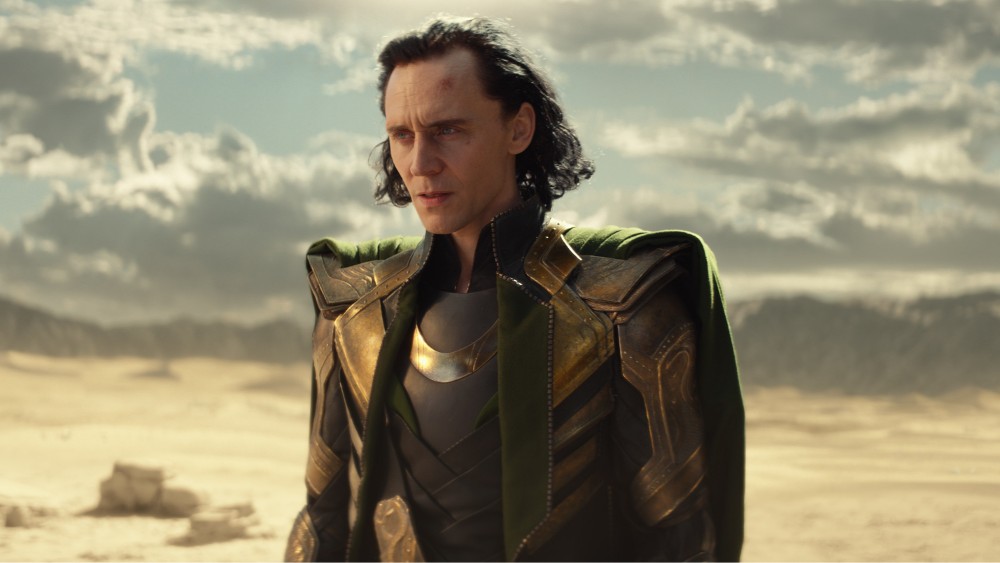
Matthew Wood is a longtime veteran of Skywalker Sound, having earned five Academy Award nominations for his sound work in film. He’s a longtime veteran of the Star Wars universe, having worked on every film in one capacity or another. Wood received Emmy nominations for his work on the finales of both The Mandalorian and Obi-Wan Kenobi.
Obi-Wan Kenobi marked the first battle between the Jedi Master and Sith Lord since 2005’s Revenge of the Sith. One of the best sequences in the episode is the climactic fight between Obi-Wan Kenobi (Ewan McGregor) and Darth Vader (Hayden Christensen). It marked their second lightsaber battle of the season. Wood, however, also worked on the 2011 re-releases of the original trilogy so he’s now worked on all of their on-screen duels.
As for The Mandalorian’s third season finale, it sees Din Djarin (Pedro Pascal) and Bo-Katan Kryze (Katee Sackhoff) leading the Mandalorian people to reclaim their homeworld of Mandalore. While the third season focused on reclaiming Mandalore it defeating Moff Gideon (Giancarlo Esposito), it also ends with a reset by having Din Djarin—now doing contract work for Carson Teva and the New Republic—and Grogu move to a cabin on Nevarro.
Wood spoke with Below the Line shortly after finishing the mix on the newly launched Ahsoka. The sound editor discusses the duality and paying respect to what’s been done before. He also discusses the shorthand in working with Dave Filoni for over fifteen years now. In terms of sound, both Ben Burtt and George Lucas have been the biggest mentors in Wood’s professional life.

Below the Line: How honored are you to receive Emmy nominations for your work on the finales of both The Mandalorian (“The Return”) and Obi-Wan Kenobi?
Matthew Wood: It’s always an honor. Working on Star Wars has just been such a dream overall—for all of us on the crew—that to get recognized by the Academy in any way always feels good. We have a lot of new folks on the show that have not done Star Wars before that got to be part of this and so it’s amazing. It feels really good. Everyone’s very happy about it. We all worked really hard on the show. Some big scenes and big moments for some really iconic characters to be part of, and so it feels great, feels really good.
BTL: After Revenge of the Sith came out in 2005 and the 2011 re-releases of the original trilogy, did you ever think there would be another opportunity to do sound editing for a climactic battle between Obi-Wan Kenobi and Darth Vader?
Wood: I didn’t. It’s always a surprise to see what’s coming down the pipe. I think it was a certain closure to some things we had at the end of working on the prequels and then The Clone Wars was something right after that. That was such an amazing project to be part of. George Lucas worked on every single episode with us and that’s where I first got to work with Dave Filoni, who has gone on to great things at Lucasfilm, guiding us through the live-action transition that he’s had with Mandalorian with Jon Favreau shepherding him through there, and now with Ahsoka. But to have these characters come back in this way in live-action—to work with Ewan McGregor again, with Hayden Christensen again, and James Earl Jones, and all of that with Deb Chow at the helm, from Mando, was a great recipe.
We had everyone just treating the characters with such great respect and wanting to be part of that moment between Obi-Wan and Anakin/Vader, where any last vestiges of their friendship are pretty much eliminated by the end of the show. You see that the real tragedy of it all through the eyes of both those characters. The actors came in and brought their A game. Everyone was really treating it with respect and we got to be part of that. The sound got to feature as part of that development with all the blending of the acting that was happening between Hayden and Obi-Wan and then the sound effects and the Darth Vader component underneath. It leaves you at the end of the last episode just heartbroken.

BTL: Watching the cracked mask sequence reminded me a lot of the similar battle with Ahsoka and Vader in Star Wars Rebels.
Wood: Yeah. These things have a duality for sure. Seeing Anakin’s padawan and then Obi-Wan’s padawan have the same experience, where you see the humanity underneath the mask. We really wanted to pay respect to what had been done acting-wise. That was part of our mixing and sound design elements all coming together to do that, to make it to have this machine quality of James Earl Jones’s performance of Vader underneath the humanity of Hayden Christensen’s Anakin. You really read it in the eyes and the very quiet intimate dialogue with Ewan, with Obi.
That was a huge challenge for us because that’s such a dynamic episode with lots of sound effects, lots of big Force things that you’ve never seen Obi-Wan doing, like picking up all the boulders and him being collapsed under there. We have that montage of the motivation for him to come out—his little Force back montage—and so very big moments in that episode paired with with very intimate quiet moments. It was huge challenge for us for sound but we loved it.
BTL: How did you approach the sound editing for the action-packed finale?
Wood: I think we wanted to make sure that everything that had been heard before—obviously, we have the iconic sound design that was done by Ben Burtt in the original films, who I worked with for many, many, many years, who still has an office at Skywalker. John Borland was our new sound designer on the show. We wanted to make sure we took elements of Ben and then we paired them with the new material that John had made. Our picture department, actually, had also set a good groundwork for us as far as what the key moments that were going to be heard are. We wanted that cracked mask moment to really show the humanity of the character through the machinery.
We wanted to make it really apparent that in all that smashing that Obi-Wan did to his chest piece that it’s broken now and Vader is going to die if he’s left there. In Obi-Wan’s mind, he’s leaving his friend there to die on the planet and we wanted to really feel the pain of that. We’d heard Vader in Return of the Jedi have his machinery broken by Luke and the Emperor and we wanted to pay respect to that, but bring it to a new place. Having Hayden be seen through the mask was a big part of that.
BTL: What about the sound editing on The Mandalorian finale?
Wood: That was everything. I mean, there’s so many amazing elements in there. We had all the new the Beskar armor Stormtroopers. We have a great legacy on that show, obviously goes Ben Burtt to David Acord to David Collins, our designer on Season Three. We had everything in that episode. You had Beskar armor in the Stormtroopers. Our villain’s voice was going to have to come through his mask again so we wanted something that paid homage to Vader or to Kylo Ren. That’s a mask that’s not there to keep them alive but there to intimidate. The dark troopers—we pulled some effects from some video game work that Collins had done before. Everything in that episode, too, was very big. Lots of giant groups of people flying against each other and jetpacks. We have a lot of R5—we have a whole bunch of new dialogue we made for R5. The mouse droid, even in that scene, has a very humorous scene in Star Wars, we wanted to pay respect to that.
Also, the shield scene where he’s having to go through each layer of the shield—that was very reminiscent of the prequels. All these things have a connection to what’s come before, just like Favreau’s very, very great about how he writes those shows and how they’re directed. We have to just be part of that. We’re invited to be part of the team very early on, similar to how George Lucas had it. When the scripts were completed, we got access to the scripts so we can start building in our mind what’s going to be part of the soundtrack and how we can be a player in this and how Skywalker Sound and our team can flesh out a script, give it depth, make it bigger than than life, and so that’s part of our job as working on the sound team to do that.
BTL: What were the most challenging aspects that came with working on either show?
Wood: I think they’re all great challenges. I think it’s apparent to all of us that Star Wars is bigger than any one person. Everyone wants to check in with each other, a lot of us are fans, and we know the special quality of what we have at Skywalker and the sounds that we create. We don’t want to duplicate anything that might have been used somewhere before in another way that might not be appropriate to this one. I think Star Wars for a lot of us is the only genre or only intellectual property or whatever you want to call it that resonates with all of us so well that we know it, we know when something has been used before, we know when what’s appropriate to use and when not to. Things like a TIE fighter can still have resonance after almost 50 years of being part of this universe. It’s building and expanding into new places using legacy material.
We all know when something sounds like Star Wars and when it doesn’t. We don’t want to shift too far into Star Trek. We don’t want to shift into something that might not be good for our universe. That’s the challenge. The energy is certainly there. The crew is very excited to work on all these projects. We’ve had an amazing amount of directors like Rick Famuyiwa and Deb Chow on these two shows were incredible. Jon Favreau is such a champion of our art, and obviously, Dave Filoni, we’ve been with for 15 years now. It’s a great crew that we have a lot of shorthand with, with a lot of passion.

BTL: I’m sure that shorthand definitely helps.
Wood: Yeah. I mean, certainly with the schedules on some of these streaming series. We’re operating on pure instinct alone. We’ve got an amazing library and some amazing sound designers to come in with some great material but we’ve got to hit the ground running and we want to make sure when you watch one of these shows on Disney+ that you might watch the streaming series of Mandalorian and right after that, want to watch one of the movies, then Clone Wars. We want the quality to feel connected. We want the shows to feel connected emotionally, visually, quality-wise so certainly we all have our challenges based on the schedules that are given to us but that we do have to operate on instinct and fairly quickly.
BTL: How did you first get an interest in sound editing?
Wood: For me, I think it was I enjoyed Star Wars as a kid. I was five years old when the first one came out so I was very taken by it– most children were. I really wanted to know about how the movies were made. That was the first time I heard what a director was, was seeing a picture of George Lucas in the back of this comic book with Alec Guinness sitting in his director’s chair in Tunisia. I was like, Who is that guy? I never saw him in the movie. I’m like, that’s George Lucas. He made the movie, my mother told me. I got a hankering to know how are these movies made. It’s not just actors standing in front of a camera. It’s like a whole thing. I just happened to be fortunate enough to live in the area where Skywalker Ranch was in Northern California. That was a huge, lucky coincidence.
But getting into sound, I always felt sound was something that was technical as well as artistic at the same time. I got to satiate two parts of my brain working on things that—the whole the interconnectedness of what sound is. It’s also like this emotional backdoor intuition into your experience in watching a movie. George Lucas always called it 50% of the experience, which it is. You don’t see it on the screen so you get to really feel it. We have a chance to expand the story and expand everything in a way that’s very subtle, and almost subliminal. I’ve always liked that. I’ve always liked dealing with the emotion of what’s happening on the show and sound is a great way to do that as well as satiating the technical part of everything for me and the whole interconnectedness of everything.
Certainly during the pandemic and whatnot, we were able to pioneer a lot of new methods to work remotely and work as a team, but still be separate from one another. Our mix process is when we all come together and finish. I really enjoyed all those parts of it. Certainly, Skywalker Sound was an amazing opportunity to be part of early on in my career. That has almost an educational feel to it because we’re always on the cutting edge of what’s happening technically and it’s a very special group out here in a very amazing location of Skywalker Ranch in Northern California, outside sort of the studio system, A lot of opportunities were given early on by George Lucas and it was a wonderful place to be, which I’m very happy to be part of 33 years later.
BTL: Who would you say your biggest mentor has been?
Wood: Certainly Ben Burtt. I worked with Ben very early in my career on The Young Indiana Jones Chronicles and he just—wonderful man that understood the creative, the technical, and was really good with a crew. Observing how to work with him for so long has influenced how I become a supervisor. The trust that he had with George Lucas and myself was wonderful right off the bat so I’d say George Lucas, Ben Burtt, certainly two of my very first mentors. I started out there when I was a teenager so I was very impressionable at that time. There are a lot of ways that they work that I’ve continued on today with my crew.

BTL: You’ve worked on both Star Wars and Marvel series. Is there any difference in the approach?
Wood: Yeah, certainly. Right after we finished Mandalorian, I got a call from the folks at Marvel that wanted to do a series with them. I did the first three off the bat. I worked on WandaVision, The Falcon and The Winter Soldier, and Loki. The schedules are similar as far as how fast we needed to get them done so we wanted a crew that could prove themselves like that. love that they understand their characters and their creativity is they have a brain trust. It’s a fairly small amount of folks that protect their characters. We’re there to tell the story of their characters.
We have new directors coming in that have a vision, but with their characters. I enjoy that—just at Lucasfilm, we also have a story group and we’re part of that and we keep the characters on an arc that’s going to be congruent through all the different permutations of the shows that we do, whether it’s a book, a video game, streaming, or even an app or something. We keep that connection there. They’ve got such a vast amount of characters at Marvel but we do, too, so I’ve enjoyed being part of both of those. We’re now, coincidentally, all under the same Disney banner, which has been great.
BTL: What advice would you give someone looking to break into sound editing?
Wood: Advice to break in? I think when I started, and this still applies today—I mean, it might be hard to feel like you can get into work on a big show like this. I feel that the basic tenants of doing sound editing are, number one for me is just being able to work with a crew is great. There’s a lot that you can learn on the job and we can teach on the job. Obviously, there are a lot more schools and classes you can take than when I was a kid. But taking a scene, a lot of people—I always tell them to take something, one of their favorite movies—it could be something from a silent film or it could be a cut scene from a video game and just rework it with your own sound.
Just work on that, do everything from the Foley to the re-recording of dialogue to the sound effects. Even if you want to repurpose music from a CD or something—from a CD, that shows my age—or repurpose music from another soundtrack to put together and mix it yourself and show that. That’s also that’s a pretty fun way to do that and present that to supervising sound editors throughout the industry. We’re all project-based. Most artists are part of the Editors Guild, and we work in IATSE. Usually, the sound editor artists are not on staff but if you can find who those folks are, you can send them your reels and get exposure to that. Working with the team is number one. I’ve got a great group of folks that we work with here, and that’s my main tenant of someone’s success with working on a crew is the ability to work with a team and that’s always been number one on my list.
All episodes of The Mandalorian and the first season of Obi-Wan Kenobi are available to watch on Disney+.





